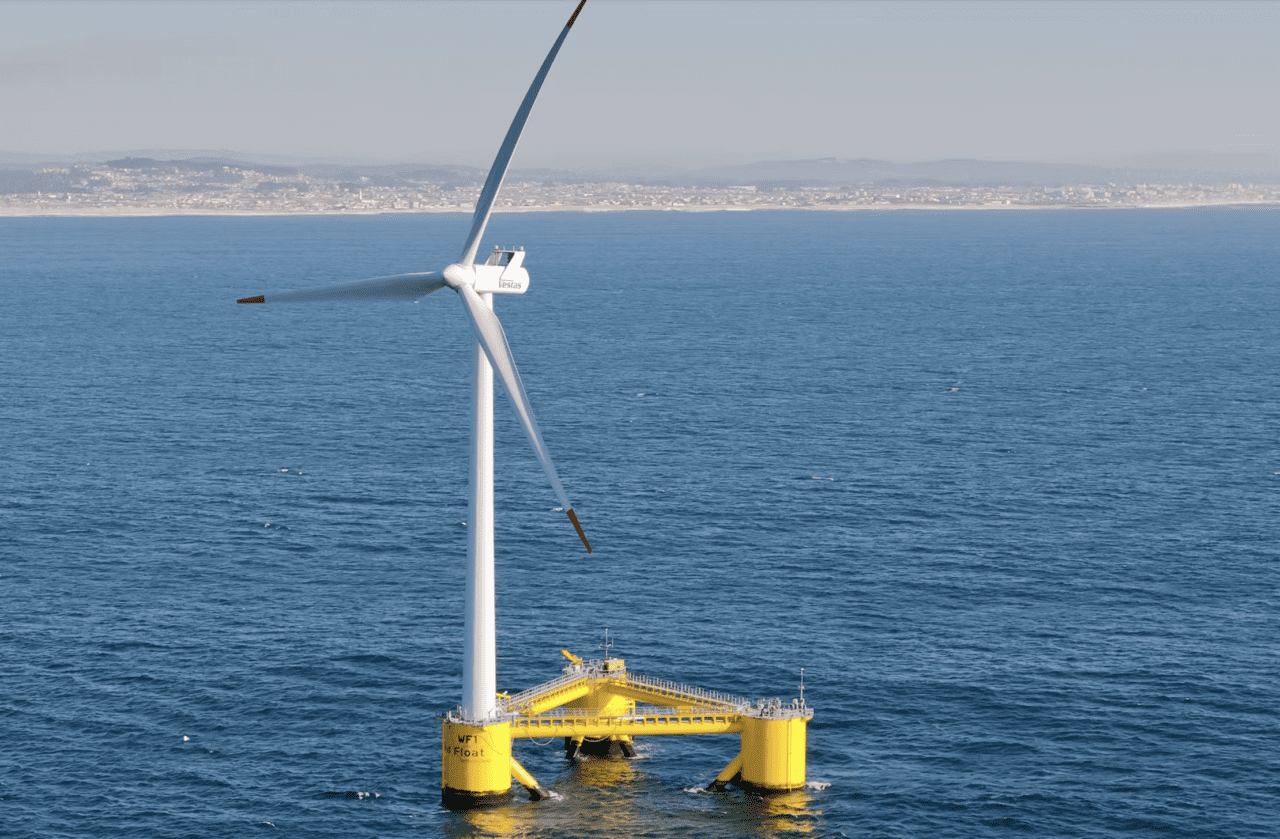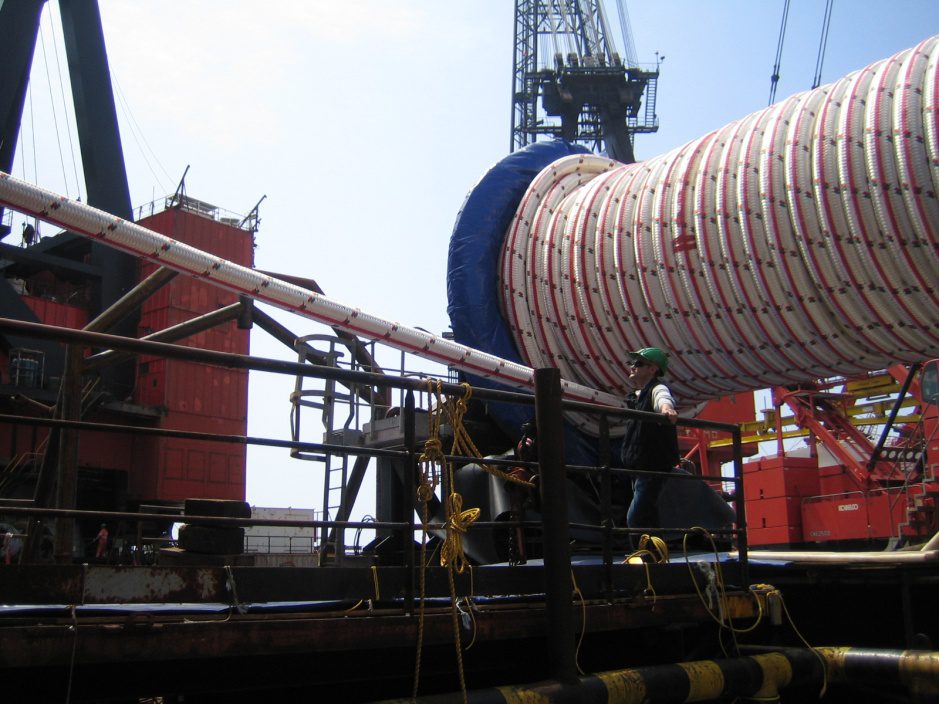The Tremendous Potential—and Challenge—of Offshore Wind Energy

Wind turbines must move farther offshore to gain greater efficiency. But the challenges associated with doing so are significant.
At the Dutch village of Den Oever, just north of Amsterdam, the A7 motorway extends onto the Afsluitdijk, a 32-kilometer dike that separates IJsselmeer Lake and the North Sea. Near the midway point, approaching the village of Breezanddijk, a veritable forest of near-shore wind turbines emerges from the south, reaching halfway to the horizon.
It's a striking scene, even to those well familiar with it.
Look at that," remarked Jose Gramaxo, president of Global Synthetics for WireCo, a leading producer of deep-water mooring systems. Gramaxo recently made the drive over the Afsluitdijk while traveling to Sneek, home of Lankhorst Ropes, a WireCo portfolio company. Those turbines are just ... massive. It's hard to appreciate the scale of this technology without seeing it for yourself."
The physical dimensions of the structures are indeed impressive. The turbines, part of The Netherland's Fryslan Wind Farm, reach more than 170 meters at their apex, taller than Egypt's Great Pyramid of Giza. Each is capable of producing 4.3 MW of electricity. The billion-dollar wind farm, in total, covers 35 square kilometers, is comprised of 89 turbines, and accounts for nearly 1.2% of The Netherlands' total electricity consumption.
Global Pipeline of ProjectsWhile noteworthy in its own right, Fryslan is but one of a growing number of offshore wind projects claiming an increasing portion of the world's energy portfolio. In 2021 alone, the global pipeline for floating offshore wind energy more than doubled, from 26,000 to more than 60,000 MW, according to the U.S. Department of Energy. And this capacity is expected to reach 260 GW by 2030, if forecasts from Bloomberg and others prove accurate.
This trend bodes well for countries seeking to diversify their energy mix, reduce dependence upon fossil fuels, achieve greater energy security, and combat climate change.
But the path to wider adoption of offshore wind energy is not without its challenges. In order to achieve greater levels of efficiency, turbines must move farther offshore, where winds tend to blow stronger and more consistently. This requires those structures to be located in deeper waters, adding significant complexity to the design, construction, and maintenance of offshore wind platforms. Whereas near-shore structures can be mounted directly to the seabed, deep-water platforms must be made to float, securely moored in place, and be capable of operating under considerably harsher conditions. It's a task tantamount to keeping a 30-story building upright and stable in a continuously dynamic, inherently unstable environment.
 1. This WindFloat platform is a semi-submersible, three-column floating platform compatible with standard offshore wind turbines. It is suitable for deployment in waters deeper than 40 meters. Source: Principle Power
1. This WindFloat platform is a semi-submersible, three-column floating platform compatible with standard offshore wind turbines. It is suitable for deployment in waters deeper than 40 meters. Source: Principle PowerTurbines that comprise the WindFloat Atlantic (Figure 1) windfarm off the coast of Portugal, for example, have endured waves in excess of 17 meters and winds topping 40 meters per second. This is according to officials at Principle Power, the technology provider behind the semisubmersible platforms on which the turbines are mounted. These structures are comprised of three connected columns, arranged in a triangular pattern, having both static and dynamic ballast systems to counteract wind and wave motion.
WindFloat PlatformThe WindFloat platform is constructed in a shipyard. It is then towed to either a port or a different shipyard, where the wind turbine tower, nacelle, and blades are assembled and mounted. The completed assembly is then towed into place by a commercial tug.
Once in place, the platforms must be secured to the ocean bottom. Here, long-standing solutions from the oil and gas industry can be adapted to meet the needs of offshore wind. Mooring systems (Figure 2) designed for floating wind turbines apply many of the same principles as those developed for offshore rigs and Floating, Production, Storage, and Offloading vessels, or FPSOs (Figure 3). In both cases, in the simplest terms, mooring lines are attached to the structure beneath the water's surface, then secured to the seabed via anchors or suction piles. Multiple lines are used to provide stability in all directions and to keep the platform in the same location.
 2. This spool of polyester mooring line, shown here on a transport vessel, is used to help secure offshore floating wind energy platforms. Source: Lankhorst Euronete
2. This spool of polyester mooring line, shown here on a transport vessel, is used to help secure offshore floating wind energy platforms. Source: Lankhorst EuroneteWhile the mooring system is simple in concept, the mooring lines themselves are anything but. This is again due to the complexities of the deep-water environment, particularly the three-dimensional forces imparted upon platforms in such areas that cause instability, or tilt."
Ships, as many know, are held in place at anchorage not by the grip of the anchor on the seabed, but by the weight of the anchor chain. The same is not necessarily true of offshore platforms, where the vertical force acting upon the structure could become excessive as the length of the mooring lines increases to accommodate greater water depths. Synthetics are typically preferred over steel-wire rope or chain in such applications, owing to the material's lighter weight, comparable strength, imperviousness to corrosion, and extended service life. Plus, at reduced weight, synthetic mooring lines offer greater ease of transport, handling, and installation.
Better Mooring SystemsYet, for all their benefits, synthetics are not a panacea. Without special treatments or coatings, synthetic mooring lines are susceptible to abrasion, as well as to soil intrusion and contamination. These conditions serve to weaken the ropes, offsetting much of the advantage gained with lighter-weight material. Rope manufacturers have long understood this and devoted significant resource to addressing these issues to support wider adoption.
The mooring system is hardly an afterthought," said Rui Faria, senior vice president of Lankhorst Offshore, but certainly the designers and engineers of these offshore projects would rather focus their attention elsewhere."
 3. This Floating Production Storage and Offloading (FPSO) vessel is among those used by the oil and gas industry for production and processing of fuels. Such vessels use many of the same mooring systems as those deployed by the offshore wind industry. Source: Lankhorst Euronete
3. This Floating Production Storage and Offloading (FPSO) vessel is among those used by the oil and gas industry for production and processing of fuels. Such vessels use many of the same mooring systems as those deployed by the offshore wind industry. Source: Lankhorst EuroneteWhen it comes to the installation and maintenance of deepwater mooring systems, the optimum combination of qualities that designers seek is simple and none, respectively, explained Faria. Lankhorst ropes and mooring systems have been used in the offshore oil and gas industry for decades. There, the company's products have routinely remained in continuous service for 20 years or more, helping to meet expectations for minimal maintenance for those mooring systems adapted for use in offshore wind energy.
Proprietary coatings to prevent soil intrusion, abrasion-proof outer layers, and cut-resistant jackets account for much of this performance, as does the rope design and construction of the mooring lines' cores. The Cabral 512 polyester rope manufactured by Lankhorst, for example, is constructed of up to 18 sub-ropes of equal tension and length, arranged in parallel beneath an outer braided jacket. This composition allows for load-sharing, resulting in breaking strengths of more than 2,500 tons. It also prevents torque from forming in the rope, which, in turn, prevents it from rotating under tension. Such rotation could reduce a rope's service life and potentially cause harmful, asymmetric forces to act upon a platform.
Manufacturing for Offshore WindSince merging with Euronete, Lankhorst has gained significant manufacturing capability to support the offshore industry in both Portugal and Brazil. In Viana do Castelo, an hour's drive north of Porto, Portugal, Lankhorst Euronete has a 6,000 square-meter facility, dedicated almost entirely to supporting offshore projects. The town's commercial port is nearby, greatly simplifying the movement of finished goods to customers. In the distance, from the overlooking bluffs, the giant turbines of the WindFloat Atlantic can be seen rotating off the coast.
Offshore wind energy indeed holds great promise. But there is still much to figure out. Even as companies continue to address myriad challenges as wind energy moves to progressively deeper waters, they are still dealing with an inherently inconsistent and unpredictable energy source-wind. If a sufficient amount of electricity that is generated when the wind is blowing cannot be stored to meet municipalities' energy needs when the winds are calm, the use of other sources, like fossil fuels, will continue to be necessary. The same is true of solar energy. Advances in battery technology and production must therefore complement ongoing developments in the renewable energy industry in order for the full benefit of clean energy sources to be realized.
Still, anything that can be done to reduce both the complexity and cost to harvest a greater portion of the planet's wind energy carries great potential benefit, both environmentally and financially.
-Pedro Lobo is director of Marketing and Strategy at Lankhorst Euronete Portugal SA.
The post The Tremendous Potential-and Challenge-of Offshore Wind Energy appeared first on POWER Magazine.